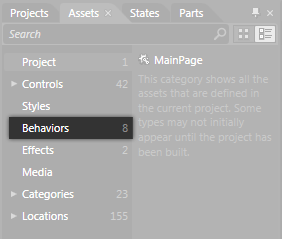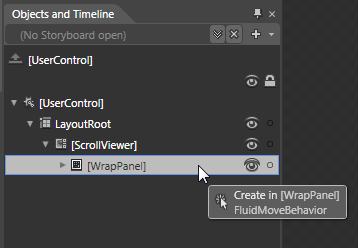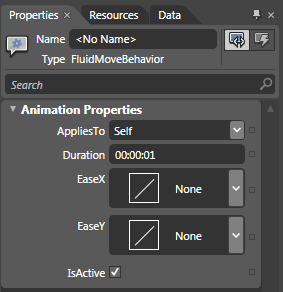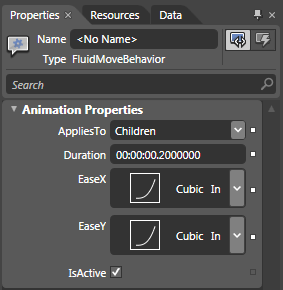分类: 嵌入式
2012-07-11 15:00:34
![]() Using the FluidMove Behavior - Page 3
Using the FluidMove Behavior - Page 3
by kirupa | 18 November 2009
In the , you got your application working to a point where resizing your browser window would cause all of your rectangles to wrap around and require the scrollbar to see rectangles that may not immediately be in view. In this page, let's make that more fun by adding the FluidMove behavior.
Adding the FluidMove Behavior
Let's go ahead and add this mysterious behavior. Display your Asset Library. You can do that by either clicking on the Assets tab or clicking on the Asset Library button. The Asset Library contains a series of categories, and from these categories, select the one labeled behaviors:

[ select the Behaviors category from the Asset Library ]
When you select the Behaviors category, the FluidMoveBehavior is something that you will see. Drag and drop that behavior onto your WrapPanel - the panel that currently is the parent of all of your rectangles. It may be difficult to drop the behavior on your WrapPanel using just the artboard, so feel free to use the object tree if you prefer:

[ the object tree provides another accessible way to add a behavior ]
Once you have dropped the behavior onto your WrapPanel, you are set...sort of. We have to make some minor changes to make it useful for the scenario we are interested in.
Customizing the FluidMove Behavior
By default, the FluidMove behavior requires a small amount of prodding and tweaking to have it work. Of course, prodding and tweaking is part of the fun when it comes to working with behaviors that deal with animation, so first make sure your FluidMove behavior is selected. With your behavior selected, take a look at the Properties Inspector:

[ the FluidMove behavior's properties are now visible ]
Setting the AppliesTo Property
Change the AppliesTo property from Self to Children by clicking on the drop-down and selecting the Children item. Once you have made that change, hit F5 to test your application. You may notice that all of your rectangles kind of wiggle their way into place, but see what happens when you resize your browser window. The rectangles now animate into position!
Changing the Duration
Now that we are up and running, let's make some more changes. First of all, the default duration of 1 second is simply too long. The transition needs to occur quicker, so for the Duration field, enter 00:00:00.2000000. This ensures your transition completes in .2 seconds.
Setting Easing Functions (Silverlight Only)
If you are in Silverlight, you have the Ea*** and EaseY properties as well where you can specify the easing that gets applied to the transition. For both Ea*** and EaseY, select Cubic In. Your FluidMove behavior properties will now look as follows:

[ the Ea*** and EaseY properties control the transition ]
Once you have done this, preview your application again. Notice that the rectangles now animate in to their new positions more quickly with some acceleration thanks to the Cubic easing function you specified.
All right, you are almost done. Let's look at few more examples example where FluidMove comes in handy before calling it a day.
Onwards to the !